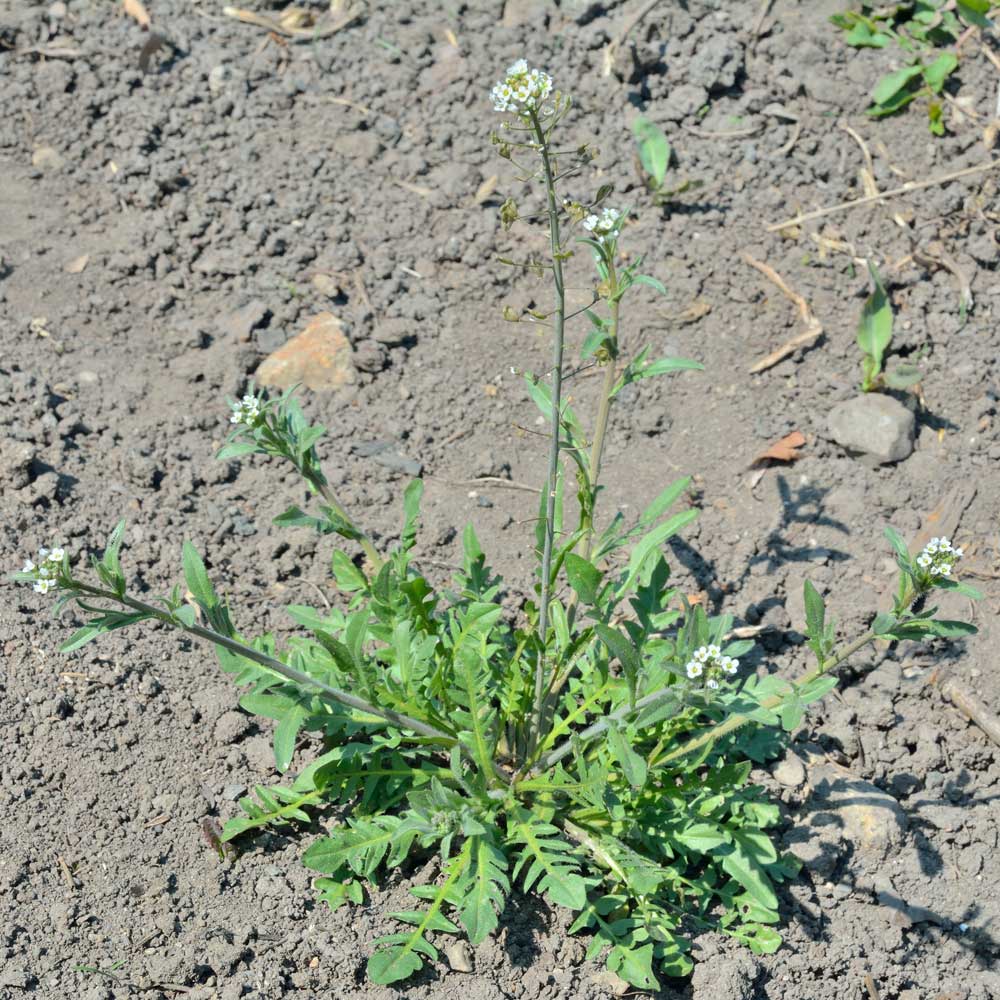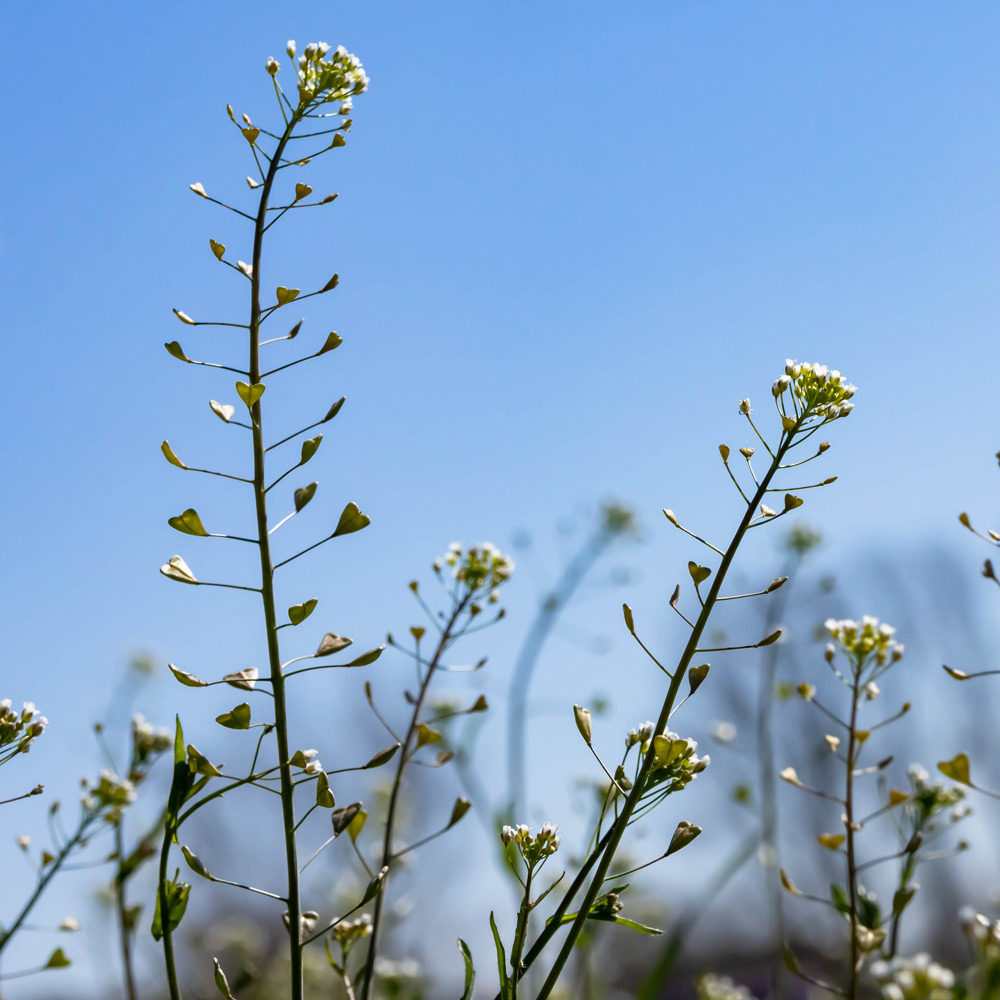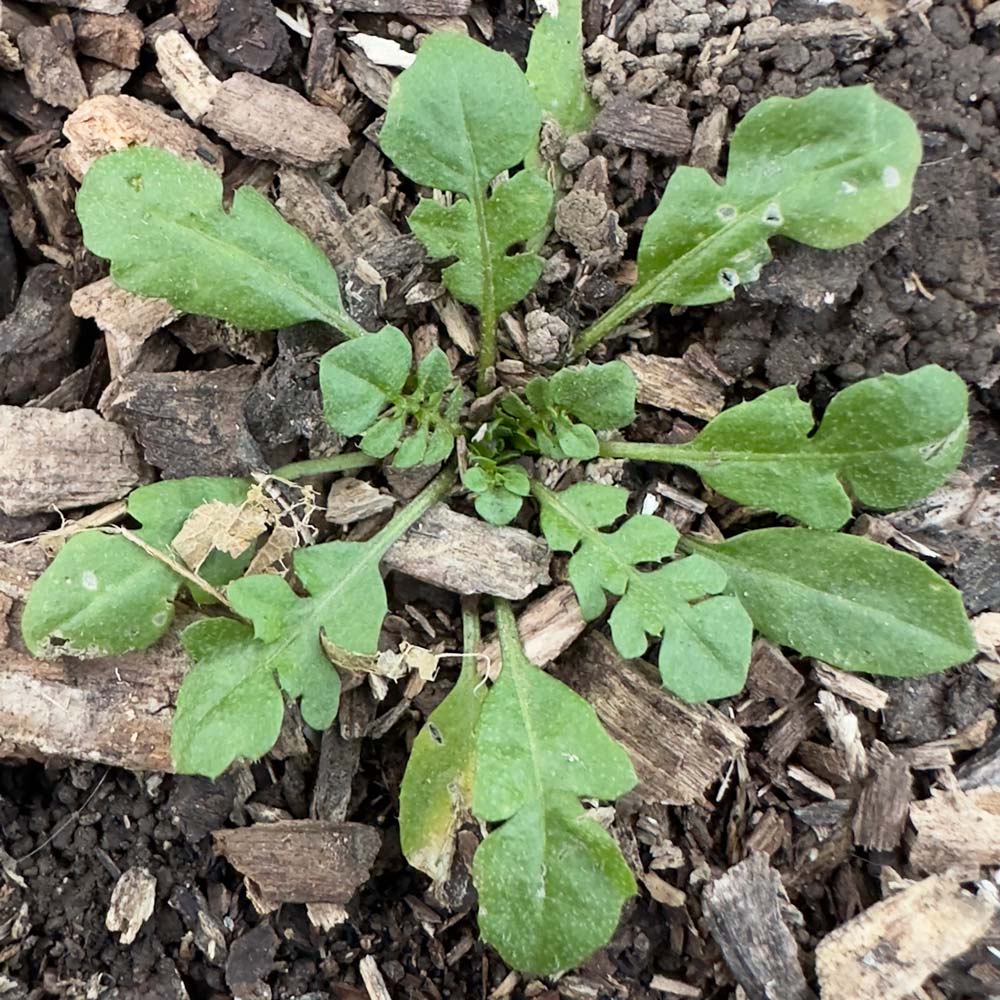Weed Control and the Life Cycles of Weeds
Some weeds come and go in a single season, some come back every year, and some grow into long-lived trees. Knowing which kind of weed you have is the key to controlling it.
No matter where you live in the world, odds are your yard has been visited by shepherd’s purse. This rampant-seeding white bloomer with the skinny, wiry stems is one of the world’s most widespread plants – and most prolific spreaders. It has been called the second most common weed in the world, after prostrate knotweed.
Although it’s native to Europe and Asia minor, shepherd’s purse grows throughout North America and most of the rest of the world.
It gets its name from the triangular to heart-shaped seed pods that reminded early observers of a purse.
Shepherd’s purse is a winter annual – one of those plants that sprouts anew from seed each fall to early spring, then flowers and drops new seed to keep the species going year after year. Existing plants die by early summer.
The plant’s profuse seeding ability and long-lived seeds add up to make it such a widespread weed.

Shepherd's purse full plant. Valery Kirsanov / iStock / Getty Images Plus
Shepherd’s purse (Capsella bursa-pastoris) is distinctive for the skinny flower stems that shoot up about one foot tall from the plant’s rosette of grayish-green leaves. The leaves start out rounded and become elongated and deeply lobed with age.
As a mustard-family plant, shepherd’s purse prefers cool weather and is one of the season’s first weeds to start growing and flower.
The skinny stems produce clusters of small white flowers at the tips that mature into those flattened, purse-shaped pods. The pods then drop tiny brown oval seeds.
Plants go dormant by early summer, although you may see dead stems and browned-out pods into summer.

Shepherd's purse flower stems with seedpods. cl11yg /iStock / Getty Images Plus
As newly germinated plants, shepherd’s purse plants are not well rooted and pull out easily. Get them before the seeds mature to head off next year’s trouble.
Shepherd’s purse also can be killed with spot-sprays of non-selective herbicides and even most liquid broad-leaf herbicides. Check the label to be sure shepherd’s purse is listed under “weeds controlled” and follow all product directions.
In the lawn, shepherd’s purse can be spot-sprayed with common broad-leaf herbicides formulated for use in lawns (i.e. ones that kill broad-leaf plants but not grass).
Most granular weed killers for lawns also are effective for wider shepherd’s purse infestations, including Preen One Lawncare and Preen Lawn Weed Control.

Shepherd's purse rosette. iNaturalist
To keep new shepherd’s purse from getting started, Preen Extended Control Weed Preventer is effective for up to six months per application against this weed. Timing is important, though. Since shepherd’s purse is a winter annual, the application is best applied in early fall.
In garden beds, a two- to three-inch layer of mulch can help smother shepherd’s purse seeds and prevent new plants from emerging.
Preen Mulch with Extended Control Weed Preventer is a bagged mulch with a granular weed preventer for two-prong protection.
In the lawn, one of the best defenses against shepherd’s purse invasion is to encourage thick grass, which eliminates space for any new weed to sprout. Regular fertilizing and overseeding the lawn with additional grass seed can help with that.